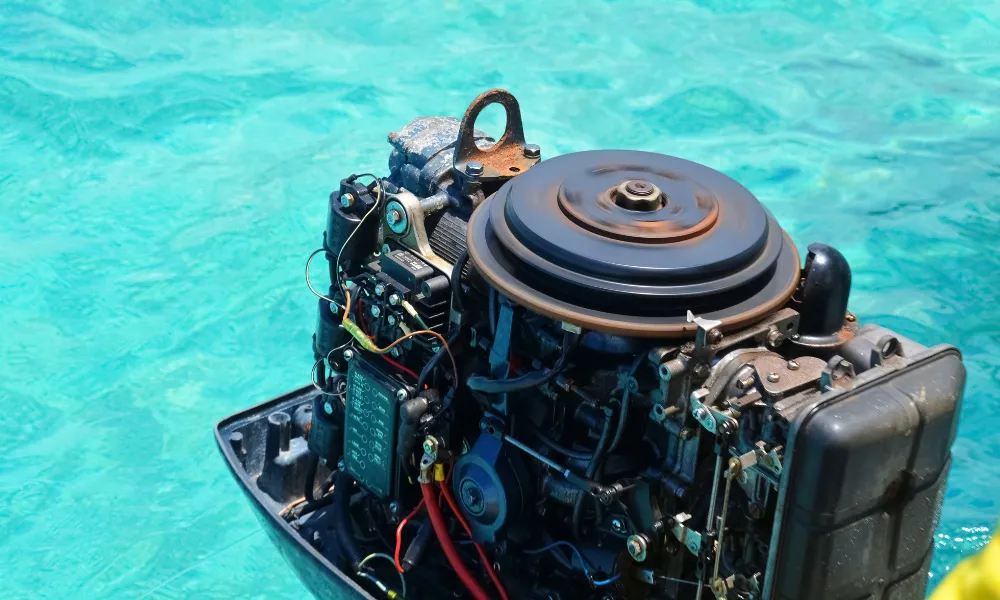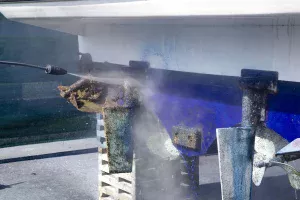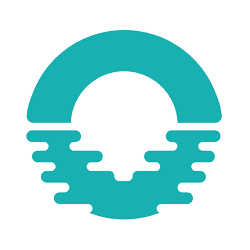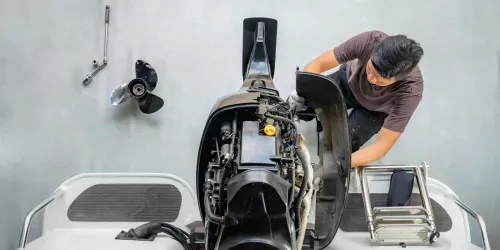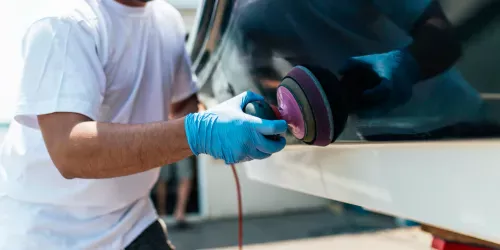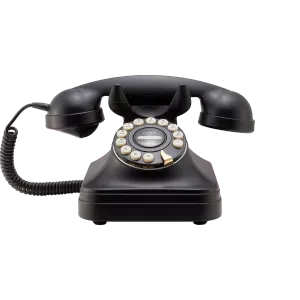Whether 2-stroke or 4-stroke, an outboard motor has a reputation for being very robust and preserving itself well over the years. With an engine of this type, you'll be pretty quiet! Of course, this does not mean that you should be negligent : it still requires regular maintenance.
The maintenance of an outboard motor must be planned before the beginning of the season and at the end of the season, in particular to anticipate the wintering.
To well prepare your boat's winterization...
You don't need to be an expert with special tools... Get your toolbox out of the attic and some rags : Boatngo takes care of the rest by delivering the 10 steps to follow for proper outboard motor maintenance.
General study
Before starting, it is important to make a general study of the engine. Check the condition of the propeller, its proper attachment, the absence of damage on it. If there is a problem, you will experience shaking in the engine and generate faster wear of your equipment ! Don't forget to check the underwater parts, such as the baseplate, so that there are no cracks that could lead to leaks. Then inspect the water intake to remove, if necessary, any residue on the screen.
Then proceed to the electrical part, checking the cables for corrosion. Replace the electrical components if necessary.
Verification of the anodes
They protect metal components from corrosion and are bound to wear out over time, instead of your boat. If you find that the anodes are worn out, MUST change them to avoid any electrolysis effects ! Put grease on the screw before installing the new anodes to make future work easier (you won't have to force the screw loose).
Lubrication
Here, it's all about putting grease on the motor joints and its friction areas so that the movements are smooth :
- First remove the propeller and clean the shaft.
- Grease the shaft and reinstall the propeller.
- Clean the steering rod.
- Grease the steering rod by moving it.
Don't hesitate to use a grease pump to get rid of the old grease completely.
Changing the engine oil
It is necessary to replace the engine oil and transmission oil at the end of each season :
- Start draining by unscrewing the drain plug.
- Try to distinguish whether the oil has a shiny appearance or not, since its shine can mean potential erosion on the metal elements.
- Replace the drain plug with a new sealing ring.
- Pour in the new oil so that its level is between the minimum and maximum by checking with the dipstick.
Changing the oil filter
The engine oil change goes with the oil filter change. Once you have changed the engine oil, it is necessary to change the oil filter :
- Place the rags under the filter to prevent leakage.
- Gently remove the filter.
- Clean the sealing surface.
- Moisten the sealing ring.
- Attach the new filter.
Replacing the fuel filter
- Remove the old filter.
- Loosen the clamp.
- Insert the new filter.
Replacing the transmission oil
- Straighten the engine.
- Loosen the lower drain plug.
- Loosen the top drain plug.
- Take a manual oil pump and fill the oil so that it comes out through the hole in the top drain plug.
- IMPERATIVELY tighten the upper drain plug first !
- Retighten the lower drain plug.
Inspection of spark plugs
They are very small parts that seem unimportant at first glance, but they are not ! In fact, spark plugs create a spark that is intended to ignite the gasoline, but they also provide a lot of information about the engine's condition depending on the color of its insulator (the part that penetrates the combustion chamber). For example, if you remove a spark plug and its insulator is black, it means that the carburation is too rich.
Replacing spark plugs costs almost nothing, which is why it is recommended to replace them every year, although some spark plugs are able to last much longer.
To do this, it is a very simple procedure :
- Turn off the main switch.
- Remove the old spark plugs.
- Put in the new spark plugs.
Use of additives
Adding additives to the engine is highly recommended. This is because additives help keep the fuel intact over time.
The additives are added directly into the engine tank according to the recommended dosage.
Soft water rinse
This is a procedure to be performed after each outing. It involves plugging the flush attachment into the engine and allowing the engine to run for about 10 minutes.
The motor is rinsed with fresh water to remove all traces of salt, lime etc.
What you need to remember !
An outboard motor is a very robust and durable part over time. Its maintenance is not an obvious task to perform, but it is basically necessary. With a minimum of willpower, you will learn how to easily perform the maintenance of your equipment. Do not hesitate to follow these steps and MEMBER, do not forget to be regular!

